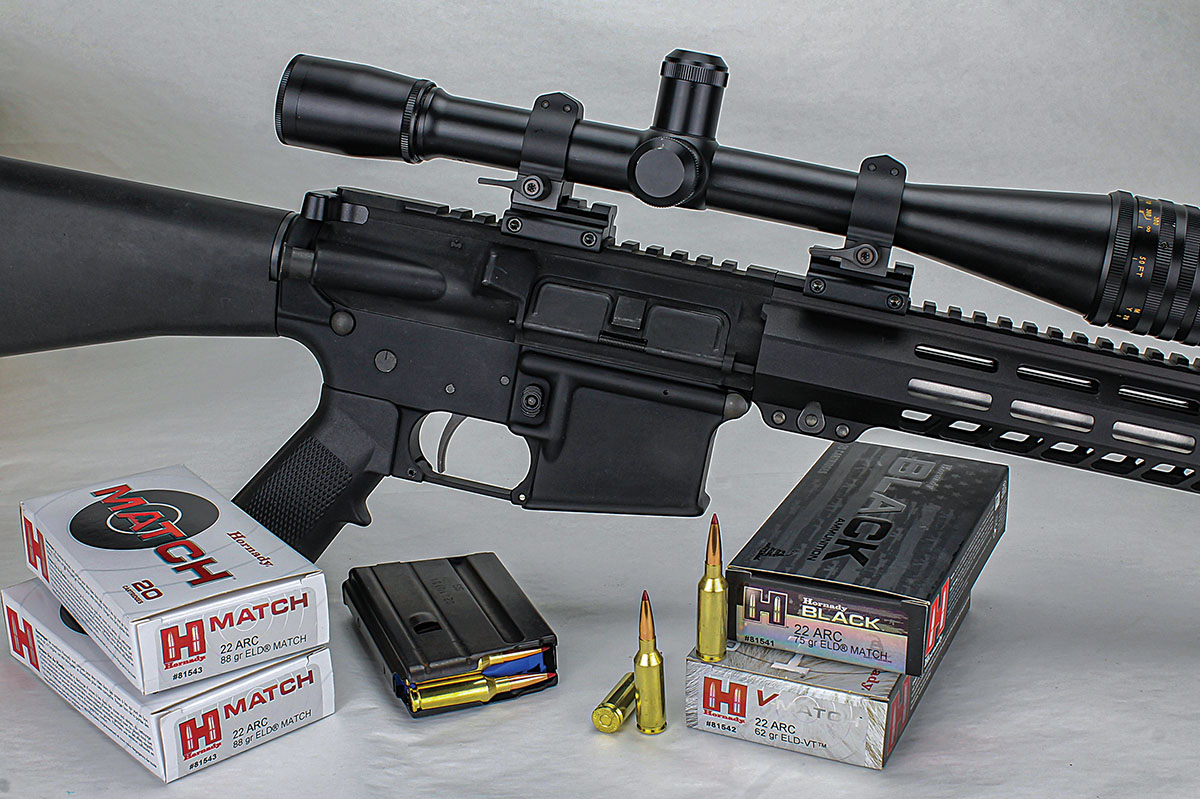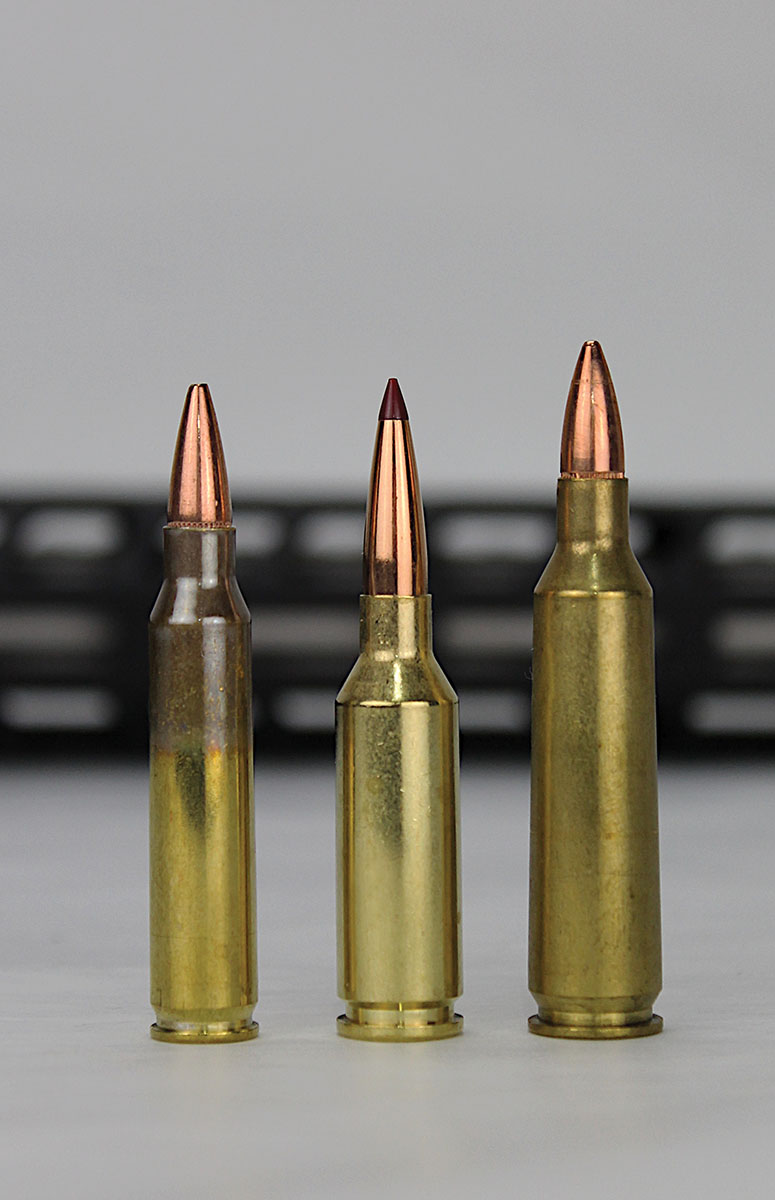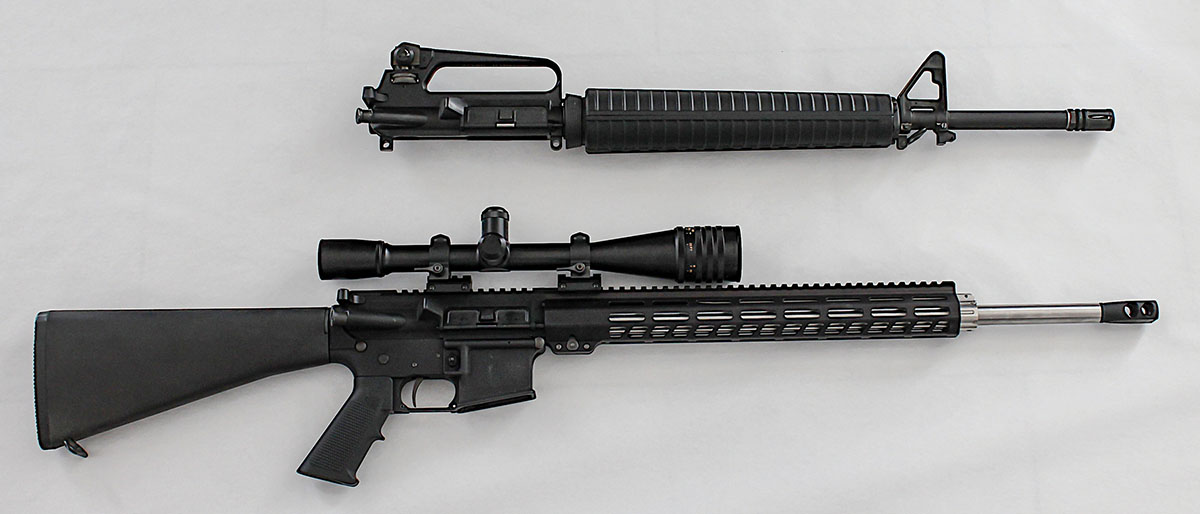Fouling Shots
Niche Cartridges
column By: Art Merrill |

It appears Hornady’s new ammunition also caught barrel makers unprepared. Queries to barrel and rifle makers recommended by Hornady all garnered “not yet” responses. Two months and $600 later, an AR-15 barrel, BCG (bolt carrier group) and a magazine from Odin Works landed on my doorstep. With a dozen other projects and deadlines clamoring for my attention, by the time I got around to building the upper and taking it to the range with Hornady’s complimentary ammunition, other writers more excited about the 22 ARC utterly scooped me. Wolfe Publishing’s Editor Jeremiah Polacek pounced on the 22 ARC and, in Handloader No. 351 (August 2024), published his first of two reports on the cartridge, to include 37 handloads, most of which outperform Hornady’s excellent factory loads. I don’t think I can add any thunder to that.

Interestingly enough, a great many people think the AR-15 is a semiautomatic copy of the M-16 military rifle when the opposite is true – the Armalite Rifle (AR) actually came first. The US Army took notice of the AR and decided Mr. Stoner’s design would make a fine select-fire battle rifle. Despite tragic early battlefield failures in Vietnam related to the cartridge, the rifle and its 5.56 NATO cartridge improved, and given the millions of M-16s still on and entering active duty around the world, it does, indeed, make a fine battle rifle. Within its design parameters, it continues to evolve to fulfill mission-specific roles.
Without a doubt, the AR-15 is America’s rifle – its modularity making it probably the most adaptable and versatile rifle ever devised – and continues to drive its popularity among the citizenry. The only aftermarket part not yet seen on an AR-15 is a solar-powered espresso maker, and if someone eventually makes one attachable to an M-LOK or Picatinny rail, it will sell. Heck, I’d probably buy one. The rifle continues to host new cartridges intended specifically for it, the latest and greatest (at this moment, anyway) being the 22 ARC.
Niche cartridges for specific rifles are nothing new, and they typically start as wildcats. Two that come to mind are the 35 Whelen and the O’Neil 33-50 Magnum, aka 33 Caliber Mauser. The intent behind both is the same as the 22 ARC – to get more performance from specific rifles, in these cases, plentiful and cheap military surplus bolt actions. The 35 Whelen is a necked-up 30-06, intended to fit perfectly in military surplus Springfield rifles with nothing more than a barrel change (or reboring and rechambering). The O’Neil 33-50 Magnum did the same for military surplus Model 98 Mauser rifles and the 8x57 cartridge. No deer or elk would be able to tell the difference between the two. Still, the 35 Whelen eventually became a legitimized factory cartridge, while you’ve likely never heard of the O’Neil 33-50 Magnum.
The 22 ARC case is not new. Expressed biblically, the 7.62x39mm Soviet case begat the 6.5 Grendel, begat the 6mm ARC, begat the 22 ARC. We might also toss in a begotten cousin, the 224 Grendel; and an uncle, the 22 PPC; as they, too, utilize the Soviet case. Among these, I see absent from SAAMI standards the 224 Grendel, leaving it in the same “un-legitimized” wildcat realm as the O’Neil 33-50 Magnum, and perhaps to suffer the same fate of a future ignominious question, “The 224 what?”
When I first started competing in High Power with the M-14 rifle, everybody knew the M-16 “mouse gun” could never shoot competitively at 600 yards. It turns out everybody was wrong because it was the 5.56 NATO cartridge with its 55- or 62-grain bullet that couldn’t compete at that distance. Once competitors went to heavier 69-grain bullets and faster twists, match-tuned M-16s eventually edged out the M-14. At serious High Power matches today, it’s all M-16/AR-15 for the Service Rifle category; M-14s are nonexistent, and civilian clone M1A rifles are as common as furry frogs, though throwback rifles do appear at informal club and CMP matches.

Hornady’s new 22 ARC is the culmination of decades of work by numberless individuals seeking ever-longer range precision from the .223-inch bullet in the AR-15. Yet, there’s more. SAAMI maximum average pressure for the 22 ARC is 52,000 psi in deference to the AR-15’s gas recoil system and light construction. Hornady load data specifically for bolt action rifles raises the bar to 62,000 psi, adding legs and speed to the 22 ARC not wise to pursue in the AR-15, such as sending an 80-grain bullet in excess of 3,000 fps.
Has Hornady’s 22 ARC achieved the upper limit of the long-range .223-bulleted cartridge in the AR-15? Having learned a lesson from disdaining the “mouse gun” for competition, I’ll refrain from making a prediction here.

